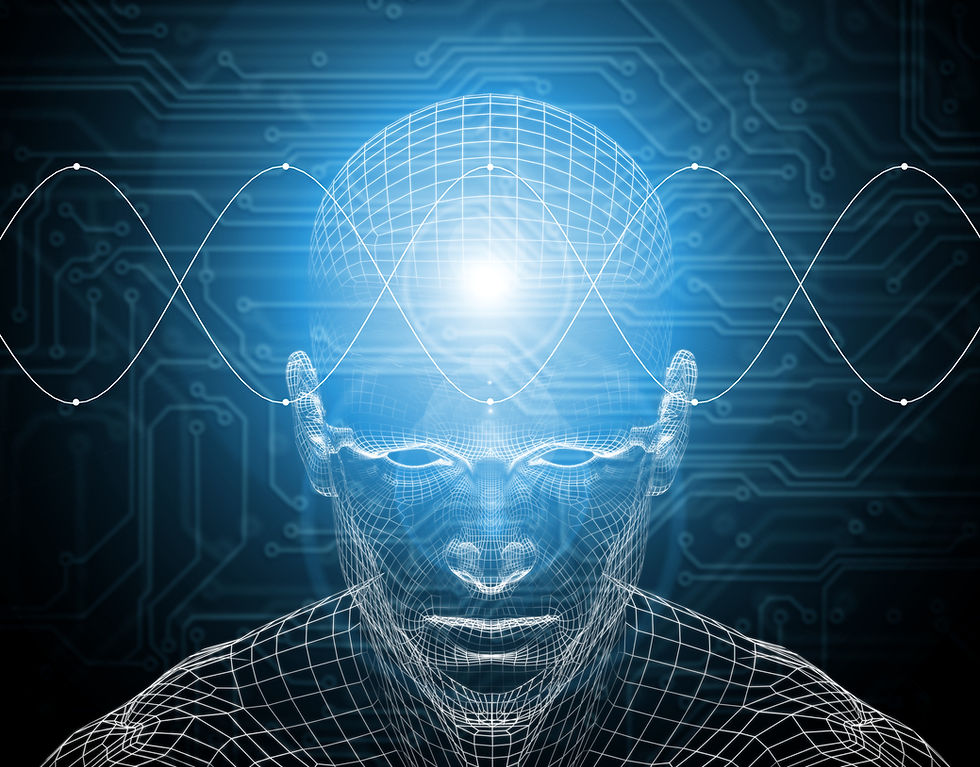Transistors: How Billions Fit on a Microchip
- Sylvia Rose

- Mar 18
- 4 min read
Transistors are semiconductor devices, operating like electric switches. Today billions of transistors can fit on a microchip. Hundreds of microchips can be used in a device. Transistors are usually three layers of silicon.

A transistor is a miniscule semiconductor device. It can amplify or switch electronic signals and electrical power. The silicon layers of a transistor are treated with various impurities to form n-type or p-type layers.
The combination creates two p-n junctions. These form a structure able to control electric current. Transistors switch on and off to represent binary states (1s and 0s).
This simple yet effective design enables complex calculations and data processing in devices like mobile phones and powerful computational systems. Chips are found in washing machines, weapons and robots.

Switching: A transistor can be turned "on" or "off" by applying a voltage to its control terminal. This controls flow of current through a circuit. It uses logical operations (AND, OR, NOT), the foundation of digital computing.
Amplifying: A small input signal can be used to control a larger output signal. Amplification is necessary in audio equipment, radio receivers, and other devices, where weak signals can be boosted.
A transistor works through three main terminals: the emitter, base, and collector. The base current controls a larger current flowing from the emitter to the collector. When a small voltage is applied to the base, it triggers a larger current through the transistor.

Current controls signal amplification and digital switching. A transistor can let electrical current flow ("on" state) or block it ("off" state). The ability to switch states enables logic gates, the fundament of all digital circuits.
The most common transistor type is MOSFET (Metal-Oxide-Semiconductor Field-Effect Transistor). In any transistor the core principle is the same: to control the flow of current between two points using a third control point.
Before transistors, vacuum tubes are used. Vacuum tubes are bulky, power-hungry, and unreliable. The invention of the transistor in 1947 at Bell Labs revolutionizes electronics. They're smaller, more efficient and durable.
Although larger than those today, the 1947 transistor is a pioneer in the miniaturization of electronics.

Microchips or integrated circuits (ICs) emerge from the need for smaller and more efficient electrical components. The first microchip is developed in the late 1950s, sparking a technological revolution.
Over decades, the miniaturization of transistors and advancements in semiconductor manufacturing increase the number of transistors which can be put on a single microchip.
While the first microchip has several hundred transistors, modern chips can contain over 30 billion. Traditional transistors are flat but designs like FinFET (Fin Field-Effect Transistor) introduce a three-dimensional approach.
This technology enhances current control and reduces leakage, for tighter packing of transistors. 3D designs use vertical space, maximizing the number of transistors able to fit on a chip.

How Billions of Transistors Fit on a Microchip
Photolithography: Engineers "print" fine patterns onto the silicon wafer. A mask with the desired circuit pattern is created. Light shines through the mask onto a photosensitive material on the silicon wafer.
The exposed areas are chemically etched away, leaving behind the desired pattern. This process is repeated multiple times to create different layers of the transistor and interconnecting wires.
Miniaturization: The size of transistors shrinks exponentially over the decades, following Moore's Law, which predicts that the number of transistors on a microchip doubles approximately every two years.
Tech advances reduce transistor sizes from several micrometers to just a few nanometers. A modern microchip of one square inch can hold enough transistors to perform quadrillions of calculations per second.

Layered Architecture: Transistors and their interconnecting wires are built in multiple layers on the silicon wafer. This creates a more complex and compact design.
Advanced Materials: Materials used to form transistors have also evolved. Innovations in silicon, insulators and metals create smaller and more efficient transistors.
Microchips are in nearly every electronic device today.
Computing: CPUs and GPUs in laptops, desktops, and servers rely on millions or billions of transistors to compute efficiently. A high-end CPU can have over 10 billion transistors, radically improving processing speed.

Consumer Electronics: Smartphones, tablets, and wearables depend on microchips. A smartphone has several, each with millions of transistors to improve functionality.
Automotive: Modern cars use microchips for functions like engine management and infotainment systems. A single vehicle may have over 100 microchips.
Artificial Intelligence: Transistors process vast amounts of data, enabling AI models to learn and make predictions. The latest AI systems outperform earlier technology, improving image recognition and language processing.

READ: Lora Ley Adventures - Germanic Mythology Fiction Series
READ: Reiker For Hire - Victorian Detective Murder Mysteries


